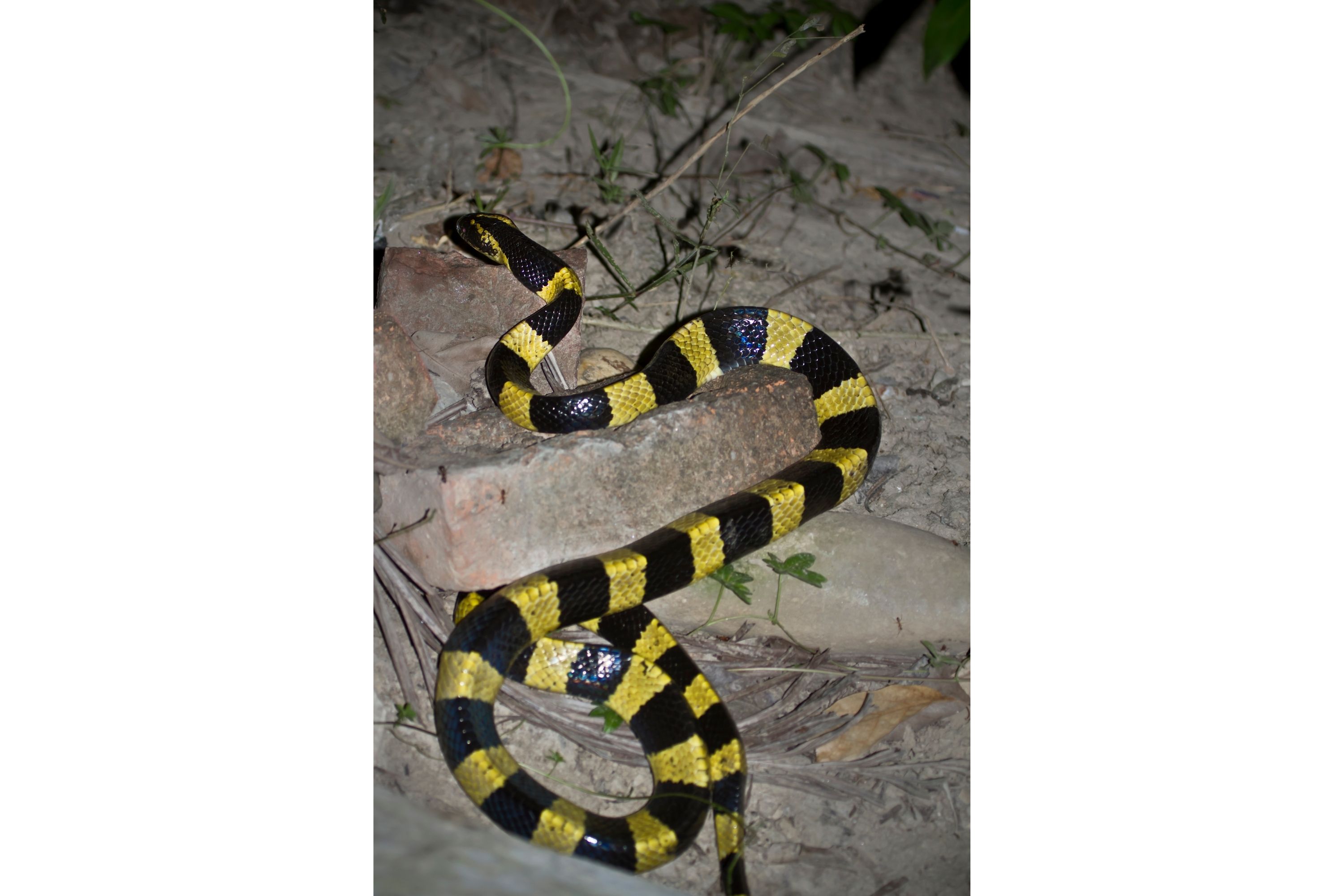Banded krait
(Bungarus fasciatus)

Description
The banded krait (Bungarus fasciatus) is a species of elapid snake found on the Indian Subcontinent, in Southeast Asia, and in southern China. It is the largest species of kraits, with a maximum length up to 2.7 m (8 ft 10 in). Although the banded krait is venomous and its bite may be deadly to humans, it is shy, primarily nocturnal, and not particularly aggressive so its overall risk to humans is low. The banded krait is easily identified by its alternate black and yellow crossbands, its triangular body cross section, and the marked vertebral ridge consisting of enlarged vertebral shields along its body. The head is broad and depressed. The eyes are black. It has arrowhead-like yellow markings on its otherwise black head and has yellow lips, lores, chin, and throat. The scientific name of the genus is derived from the Kannada/Telugu word 'bangara' in Kannada and 'bangarum' in Telugu, meaning "gold", referring to the yellow rings around its body. The banded krait occurs in the whole of the Indo-Chinese subregion, the Malay peninsula and Indonesian archipelago, and southern China. The species is common in the states of West Bengal, Odisha, Mizoram, Assam, Manipur and Tripura of India, Nepal and Bangladesh, but becomes progressively uncommon westwards in India. It has been recorded eastwards from central India through Bangladesh, Myanmar, Cambodia, Thailand, Laos, Vietnam, and southern China (including Hainan and Hong Kong), Philippines to Malaysia and the main Indonesian islands of Borneo (Java and Sumatra), as well as Singapore. In India, it has been recorded from Andhra Pradesh, Bihar, Chhattisgarh, Jharkhand, Madhya Pradesh, Maharashtra, Northeast India, Odisha, Tamil Nadu, and West Bengal.It has recently been recorded from Hassan District in Karnataka, Chalkari, Bokaro District, Jharkhand, Trivandrum, Kerala and Amalapadu, Srikakulam District, Andhra Pradesh Banded kraits may be seen in a variety of habitats, ranging from forests to agricultural lands. They inhabit termite mounds and rodent holes close to water, and often live near human settlement, especially villages, because of their supply of rodents and water. They prefer the open plains of the countryside. The banded krait has been found in Myanmar up to an altitude of 5000 feet
Taxonomic tree:







